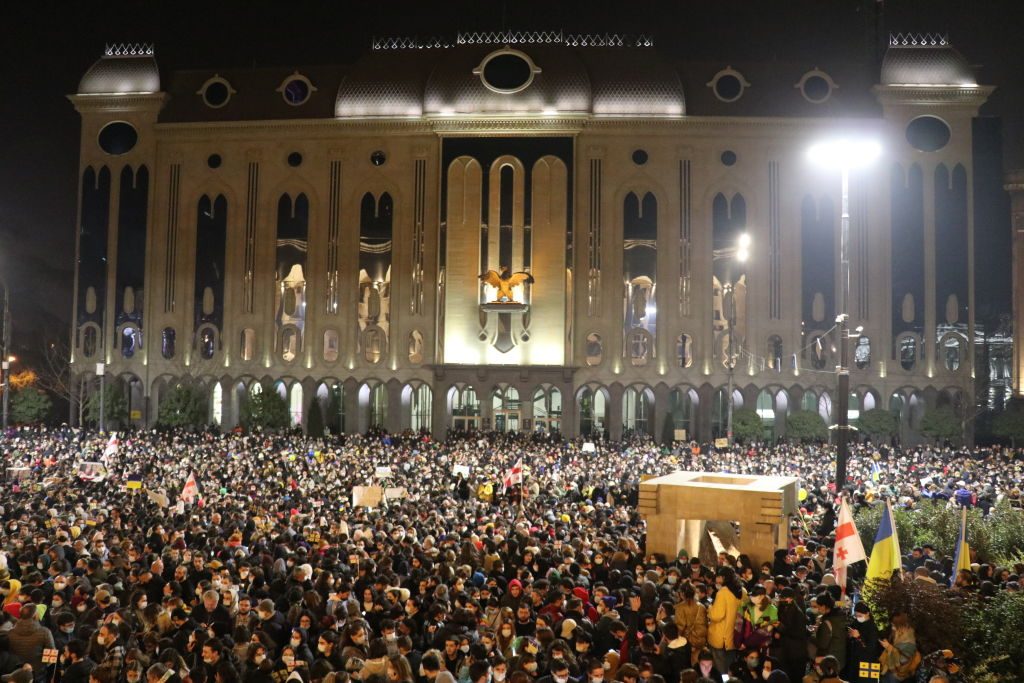Robertas Narkus, the artist set to represent Lithuania in Venice this spring, was at an anti-war demonstration near the Ukrainian embassy in the capital of Vilnius earlier this month holding sunflowers, the national symbol of Ukraine. “A car window opened and the guys enthusiastically asked where I had managed to buy the sunflowers,” he told me. “I pointed them to a shop called A Million Roses, run by a Russian family.”
The moment captures the complicated situation found in several former Soviet countries. Though these nations each gained their independence with the fall of the Soviet Union (USSR) in 1991, they retain strong historic, cultural, and economic ties with Russia today, lending a nuanced understanding of the Russian invasion of its neighbor and an acute sense of empathy for what Ukraine is suffering right now. And alongside all that, there has been a deep sense of anxiety over whether their nations might be next in line for a Russian attack.
Since the fall of the Iron Curtain, the governments in many of these former Soviet-controlled countries have shifted their identities away from being part of a greater Russian empire. This has also been a key task for their art and culture sectors.
Even their description as the “Eastern Bloc” is quickly denounced today. “There is no such thing! We have never been in the bloc, we were occupied for 50 years!” Narkus said. This current war in Ukraine has stoked old fears around further occupation. “I haven’t been working as usual since it started, it has not seemed relevant,” said Estonian art dealer Olga Temnikova, from her Tallinn gallery Temnikova & Kasela, who is organizing a sale to benefit Ukraine. “Right now, everything feels possible. Estonians feel that their homes are in danger.”
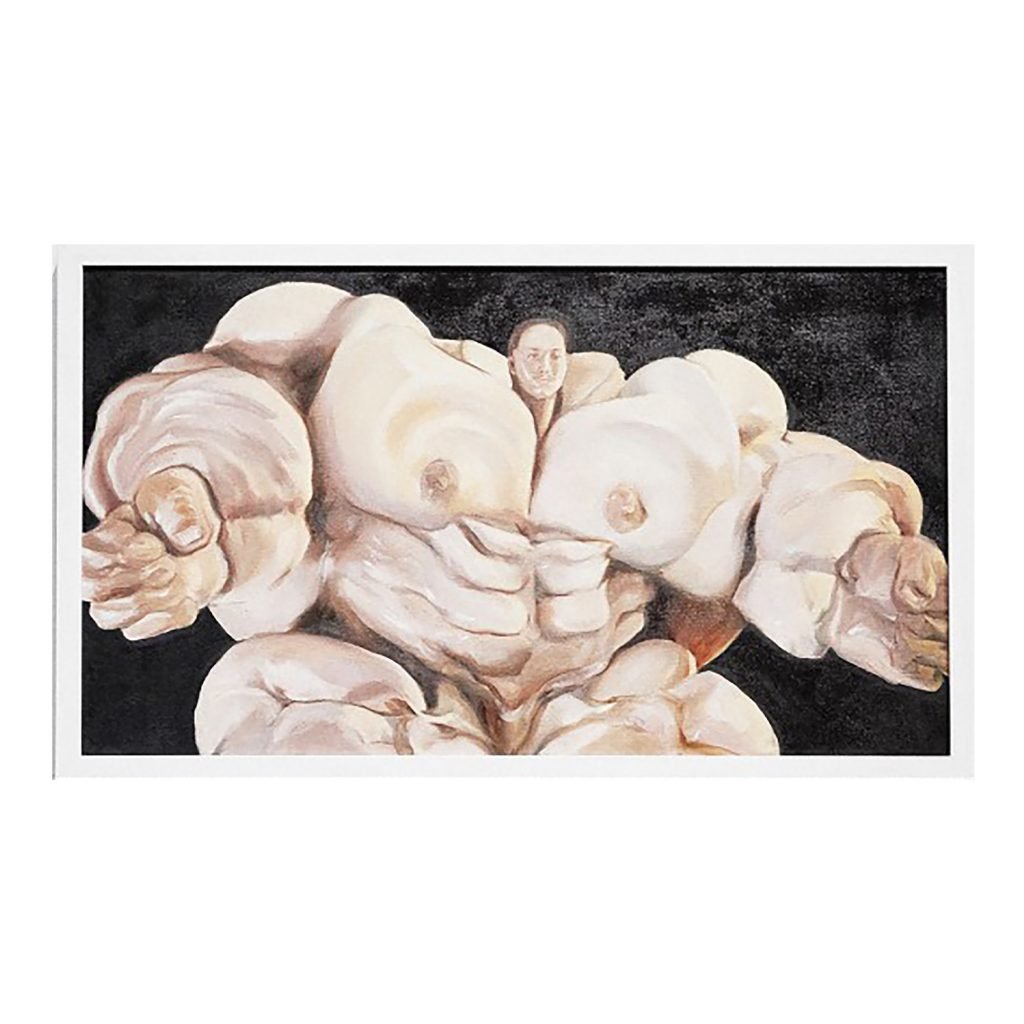
Estonian artist Tommy Cash’s Testosterone Tyrone (2019) is being auctioned with Temnikova & Kasela starting today, March 22. His work looks at post-USSR life. His mother is from Ukraine. Courtesy Temnikova & Kasela Gallery.
Old Wounds
Across Eastern Europe, and especially in places nearest to Russia, deep concern has been growing since the Russian army invaded the Ukrainian region of Crimea in 2014. When Russia most recently launched its war against Ukraine on February 24, many people working in the cultural field in the surrounding nations stopped whatever they were doing. “Some shows have been canceled or galleries have been temporarily closed, to concentrate more on the ongoing war and the ways of support,” said Lisa Offerman, who runs the commercial gallery LC Queisser in Tbilisi, the capital of Georgia.
For Georgians, their concern for Ukraine comes from a direct and recent experience: Russia invaded Georgia in 2008 and now controls around 20 percent of the country which it occupied during that conflict.
In Latvia, further up north on the Baltic Sea, where there is a large Russian-speaking minority, Russian president Vladimir Putin’s twisted rhetoric about the “liberation” of Russians in Ukraine sent a shiver through the country. “Putins’ distortion of history and second-guessing sovereign states is a direct threat to our country also,” said Elīna Drāke, executive director of Kim? Contemporary Art Center in Riga, the Latvian capital.
“Aside from experiencing palpable fear of being the next target in Putins’ plan to rebuild the former Soviet Union, the cultural scene is pretty much paralyzed at the moment,” she added. “This all hits too close to home.”
Drāke emphasized the importance of activism, protest, and support for Ukraine. And in cities throughout Eastern Europe, demonstrations broke out immediately against the war in Ukraine, including in Prague, Tbilisi, Berlin, and Tallinn, where tends of thousands of people turned out.
Kim, among many other cultural institutions in the Baltics, has refocused most of its attention to fundraising. The art center generated more than €14,000 ($15,438) for a Latvian-based charity helping Ukraine, via a sale called “Portfolio Against Force” that runs until the end of March. There are photographic works on offer by Latvian artist Evita Goze from her series “On Guard,” featuring tender images documenting young boys being integrated into the military, taken between 2015 and 2019.
Drāke said that culture workers in Latvia and the Baltic states are also providing creative jobs for Ukrainian refugees, creating pop-up residencies for Ukrainian artists and cultural practitioners, as well organizing a pop-up protest festival right in front of the Russian Embassy.
“As we have been recovering from our collective trauma of the Soviet past, we have become more open to dissect and address our shared experiences with former Soviet states as an inherent part of our current socio-economic reality,” Drāke said. “And the importance of that is amplified ever more so now, when our post-Soviet legacy shows its ugly face again.”
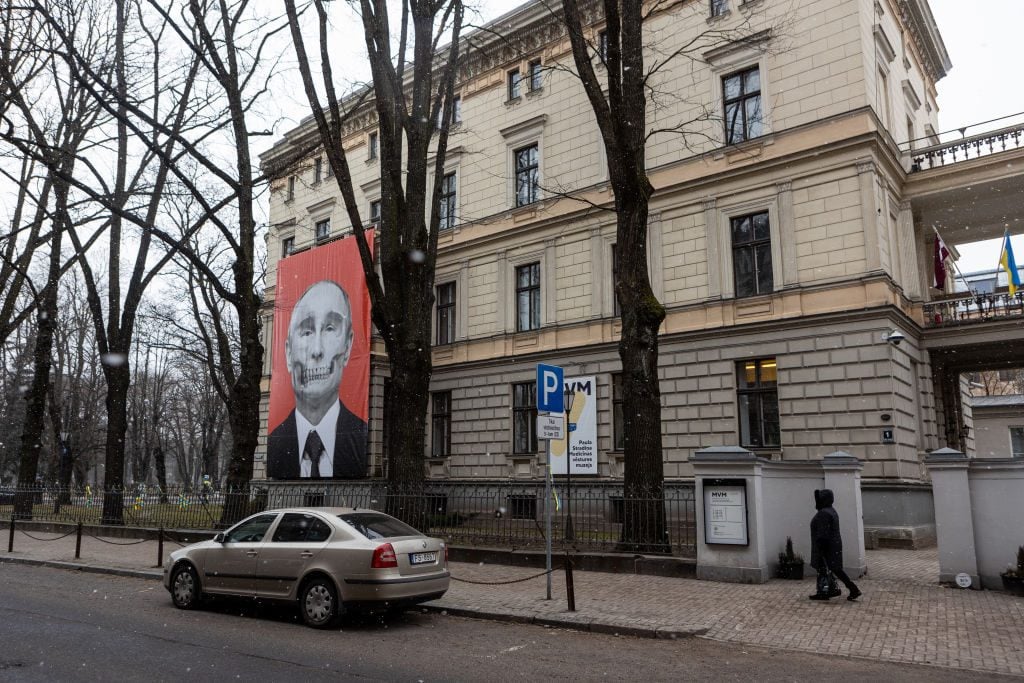
Poster against Putin on a building near the Russia Embassy in Riga, Latvia, on March 8, 2022. Authorities in Latvia and Lithuania’s capital cities have renamed the streets housing Russian embassies in order to honor Ukraine in its fight against Russia’s large-scale military invasion. Photo by Paulius Peleckis/Getty Images.
History Lessons
The last 30 years have been transformative as well as disruptive for countries that were under the thumb of the USSR for decades after World War 2. In the most recent post-Soviet years especially, their cultural scenes have become increasingly interconnected, and opened to the globalized art world.
“You really feel a sense of civic activism, which is something we have felt that art and culture has historically lacked,” said Andra Silapētere, a curator at the the Latvian Center for Contemporary Art, who is co-curating the Latvian pavilion in Venice this year with Solvita Krese, the institution’s director.
“The civil society we have each built since the fall of the Iron Curtain is there, and it is working,” added Silapētere. “You see in Ukraine, it is their weapon.”
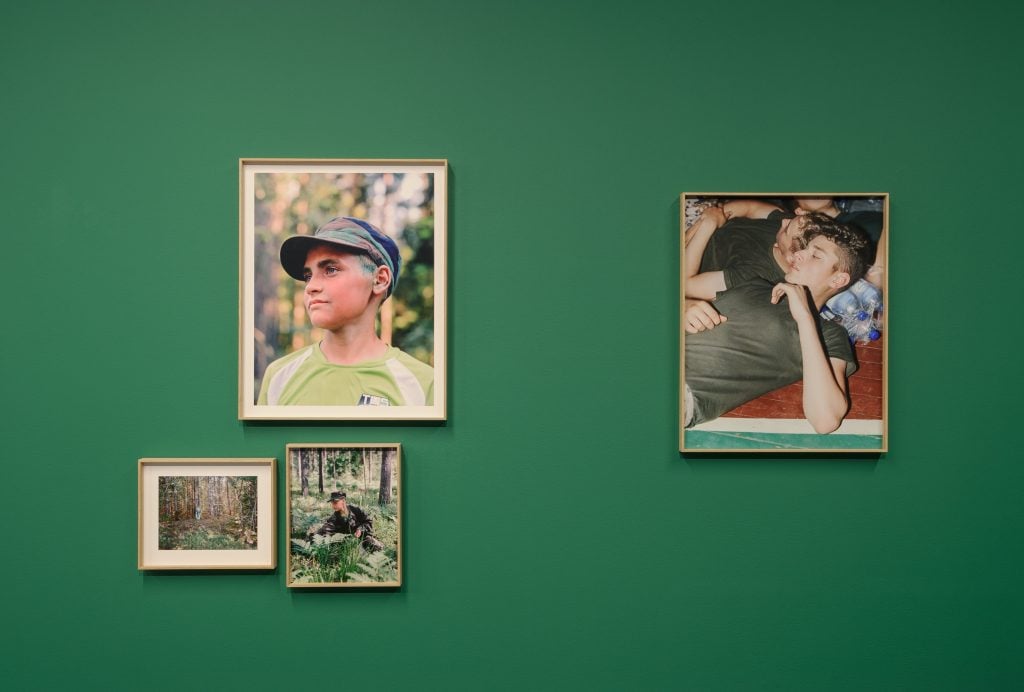
Evita Goze, from the series “On Guard,” a few of which are on sale to benefit a Latrvian charity helping Ukraine. Installation views from the exhibition “On Guard” at ISSP Gallery, Riga, 2019.
Soft politics has also been at play in the cultural field. Take, for example, the East Europe Biennale Alliance, which was founded in 2015 by the organizers of the Biennale Matter of Art in Prague, the Warsaw Biennale, the Kyiv Biennial, the OFF-Biennale Budapest, and the Survival Kit Festival in Riga, all cities with post-Soviet identities.
The group, whose aim is to share and collaborate across borders, see the biennial as an “artistic tool for political emancipation” in Eastern Europe, which was facing rising right-wing nationalism and increasing political oppression. The alliance, founded in the wake of the annexation of Crimea in Ukraine, held an event last December in Kyiv.
Krese and Silapētere had both traveled from Latvia to the Ukrainian capital for the event. “It is painful to see what is happening there now when we were just there, and taking part in discussing the situation, the region, and the bigger picture,” said Krese.
The two curators were also the co-initiators of a letter addressed to the Venice Biennale that begrudged what Silapētere and Krese called the Italian organization’s “very soft reaction” to the war at the beginning of March. Their message was received, and in the following weeks, the Venice Biennale organizers resent a stronger message of condemnation against the Russian invasion as well as a message of support for the Ukrainian pavilion.
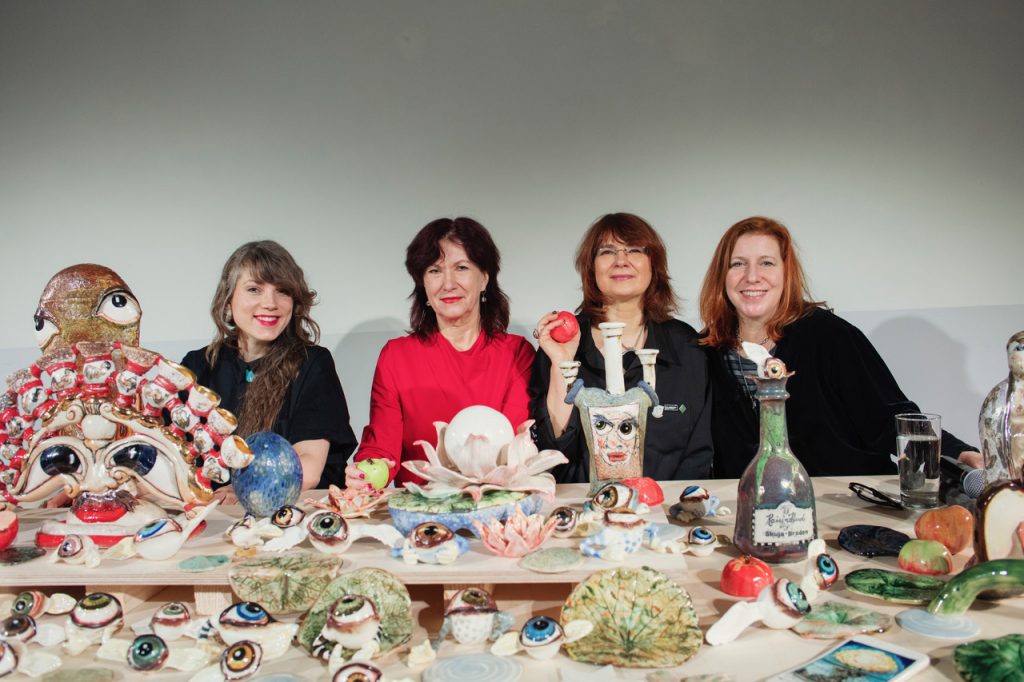
Andra Silapētere, Solvita Krese and Skuja Braden. Photo: Kristīne Madjare
The Gray Areas
As Narkus, the artist behind the Lithuanian pavilion mentioned, along with a feeling of unequivocal solidarity with Ukraine, many in the region have a deep understanding of Russian culture, as well as ties with artists, curators, and institutions there.
Like other European nations, including Germany, those in the East had also become more reliant on Russia energy and money than they felt comfortable with. “This is our chance to wake up from the amnesia of comfort, convenience and numbness induced by gas and oil,” said Narkus.
He added that there were not infrequent invitations to participate in shows in Russia, which had stepped up a show of diplomacy in recent years. A recent project that focused on artist initiatives from the region, including Lithuania, triggered him, not least because of the wording. “Behind all the nice words and Goethe-Institut support, and smart people, it smelled a little Soviet Union,” he said.
Temnikova, the art dealer, stressed that in recent years, the art scene in the Baltic had become increasingly cautious about working with Russian state money. “A lot of people stepped away after the invasion of Crimea,” she said. One could also tell a lot of about Russian colleagues’ perspectives simply by asking for their position on the annexed peninsula, she said, adding that she knew of Estonians working across the shared border who would sometimes make decisions about partnerships that way.
The invasion of Ukraine struck a particularly strong chord in Estonia, which celebrates its independence from the Soviet Union on February 24—the same day that Russia launched its violent attempt to take back Ukraine. The gallery is opening an auction today, March 22, with dozens of works that will directly benefit six Ukrainian NGOs.
At the same time, because of the relatively large contingent of ethnic Russians in both Latvia and Estonia (more than 20 percent of each country’s population is Russian), there remains a sense of empathy for dissenters from the aggressor state. Krese, the Latvian curator, expressed concern about a looming Russophobia. “There are people who are standing against this war who are still being excluded,” she said.
Temnikova said that she has also been trying to help a few Russian friends from the art world as well, who have gone virtually broke or have had to flee to Estonia. “It was hard to be a Russian gallery and artist before and now it is just impossible,” she said. “But you cannot compare what the Ukrainians and the Russians are going through—Ukrainians houses are burning.”
There have been punitive moves event at the government level, as both Latvia and Estonia have shut visa applications for Russians.
For now, many in Eastern Europe cling to news updates, continue to mobilize, and support Ukrainians through residencies, charity events, and other forms of direct activism. But everyone Artnet News spoke to seemed deeply worried about the future.
“We have traumatic experiences behind us, because we too were occupied by Russia,” Krese said. “We were sold to keep peace in Europe. We are worried whether NATO will defend us or sell us again to keep peace in Europe. Things you could not believe in your worst nightmares are happening.”
